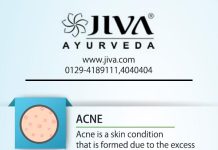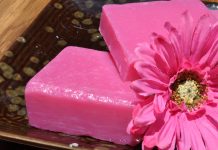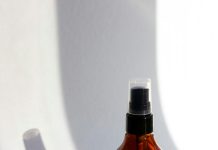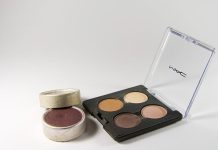In the ever-evolving world of skincare, where serums and creams vie for a spot on your bathroom shelf, exfoliation emerges as both a beloved ritual and a subject of debate. With promises of radiant, smooth skin, daily exfoliation tempts many to embrace its allure. But as the line between glow and irritation blurs, we find ourselves asking: is this daily ritual a friend or foe to our skin? Join us as we delve into the science, benefits, and potential pitfalls of daily exfoliation, navigating the fine balance between achieving that coveted glow and maintaining healthy, resilient skin.
The Science Behind Exfoliation: Understanding Your Skin’s Needs
Exfoliation is a process that removes dead skin cells from the surface, promoting a brighter and more even complexion. The science behind it involves enhancing the skin’s natural turnover process. This turnover, known as desquamation, slows with age, leading to a buildup of dead cells that can result in a dull appearance and clogged pores. By incorporating exfoliation, you’re essentially giving your skin a gentle nudge to shed these layers, revealing fresher skin beneath.
However, it’s crucial to understand your skin’s unique needs. Over-exfoliation can strip away too much of the protective barrier, leading to issues like irritation and sensitivity. Consider the following when deciding on your exfoliation routine:
- Skin Type: Oily or acne-prone skin may benefit from more frequent exfoliation, while sensitive or dry skin might require a gentler approach.
- Exfoliant Type: Physical exfoliants use granules to manually scrub away dead cells, while chemical exfoliants employ acids to dissolve them. Each has its own impact.
- Frequency: Generally, 2-3 times a week is sufficient for most skin types, but daily exfoliation might be too harsh for some.
By understanding these factors, you can tailor your exfoliation routine to suit your skin, maintaining its health and vitality.

Balancing Act: How Often Should You Really Exfoliate?
Finding the right exfoliation frequency is key to maintaining healthy, radiant skin. Over-exfoliating can lead to irritation, redness, and a compromised skin barrier, while under-exfoliating might leave your skin looking dull and congested. So, how do you strike the perfect balance?
- Skin Type Matters: Those with oily or acne-prone skin might benefit from exfoliating 2-3 times a week, whereas individuals with sensitive or dry skin should consider limiting it to once a week.
- Product Choice: Opt for gentle exfoliants with natural ingredients to minimize the risk of irritation. Chemical exfoliants like AHAs and BHAs can be less abrasive compared to physical scrubs.
- Listen to Your Skin: Pay attention to how your skin reacts. If you notice excessive dryness or irritation, it might be time to scale back.
Ultimately, the goal is to reveal fresh, glowing skin without compromising its natural protective barrier. Adjust your routine as needed to find what works best for you.

Choosing the Right Exfoliator: Tailoring to Your Skin Type
Finding the perfect exfoliator is essential for maintaining healthy skin, and it’s crucial to match the product to your specific skin type. For those with oily or acne-prone skin, a chemical exfoliator containing salicylic acid can be beneficial, as it penetrates deeply into the pores to clear out excess oil and prevent breakouts. Conversely, if you have dry or sensitive skin, opt for a gentle exfoliator with ingredients like lactic acid or jojoba beads to remove dead skin cells without causing irritation.
- Normal Skin: A balanced mix of chemical and physical exfoliants works well.
- Combination Skin: Use a mild exfoliant to address both dry and oily areas.
- Mature Skin: Look for products with glycolic acid to boost cell turnover and smooth fine lines.
Remember, understanding your skin’s unique needs will guide you to the most effective exfoliating routine, ensuring your skin remains vibrant and healthy.

Beyond the Surface: Long-term Effects of Daily Exfoliation
Daily exfoliation can be a double-edged sword. While it promises radiant and smooth skin, it can also lead to unforeseen long-term consequences. Regular exfoliation might initially seem beneficial by removing dead skin cells and promoting cell turnover. However, over time, it can compromise the skin’s natural barrier, leading to issues such as:
- Increased Sensitivity: Constant exfoliation can strip the skin of essential oils, making it more susceptible to irritants.
- Chronic Dryness: Over-exfoliation can lead to a persistent state of dryness, resulting in flakiness and discomfort.
- Premature Aging: The breakdown of the skin barrier can accelerate the appearance of fine lines and wrinkles.
To balance the benefits and risks, it’s essential to choose the right type of exfoliator and adjust frequency based on individual skin needs. Consider incorporating hydrating and barrier-repairing products into your routine to mitigate potential downsides.





































